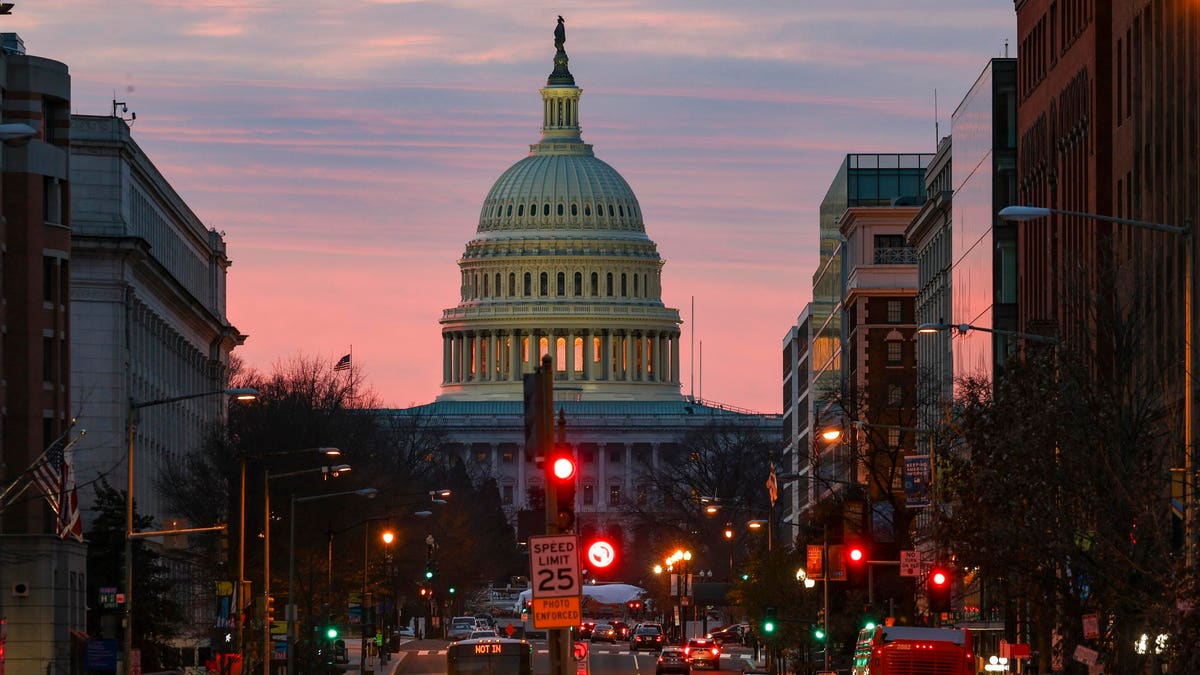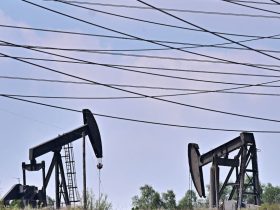Topline
The U.S. government could shut down imminently unless Congress resolves a deadlock by this weekend, and though experts suggest the impact may be short-lived for the teetering economy and stock market, it poses yet another challenge for many Americans’ financial health.
Key Facts
If lawmakers fail to pass a spending bill or a stop-gap continuing resolution by Sunday, the roughly two million federal workers and another two million military employees whose jobs are funded by Congress will face furloughs or work without pay until the stalemate concludes.
Those whose roles are considered essential and thus are required to work without pay include active-duty military, Transportation Security Administration screeners and federal prison workers, while a majority of employees at the Securities and Exchange Commission, National Aeronautics and Space Administration and economic agencies will face furloughs.
There’s a 90% chance the government will shut down at some point this year, Goldman Sachs’ top political economist Alec Phillips estimated in a Tuesday evening note to clients, also calculating each week of the closure would knock off 0.2 percentage points from fourth-quarter gross domestic product growth due mostly to lost productivity from furloughed public servants.
But the economic slowdown won’t last long: Any shutdown-related economic snags would in turn be immediately realized as growth of the same size during the following quarter, according to the bank, and the consensus among other market experts is that the stock market is unlikely to feel significant adverse effects from a stoppage.
Sevens Report’s Tom Essaye wrote to clients last week despite the “ominous” nature of the term, shutdowns “don’t impact enough people or last long enough to have a lasting macroeconomic impact,” and LPL Financial strategist Jeffrey Buchbinder predicted Tuesday there will be “minimal damage” for equities, pointing to a 16-day shutdown in October 2013 during which the S&P 500 actually gained 3.1%.
Still, there are several areas of the economy which will be noticeably impacted by a shutdown: The U.S. Travel Association estimates a shutdown will cost the domestic travel sector $140 million per day largely due to the closure of Smithsonian museums and possible shutterings of national parks.
Federal contractors will also face potential delays in payments, and broadly there will likely be a temporary decrease in aggregate demand for private sector goods and services as government employees rein in spending without paychecks hitting their bank accounts.
Tangent
There’s a “long list” of other factors testing the health of the economy, Federal Reserve chairman Jerome Powell said last week, naming the ongoing auto workers’ strike, the resumption of student loan payments beginning next month, elevated interest rates and surging crude oil prices as looming shocks. Once again, consumers’ ability to navigate a blitz of challenges will be put to the test. More expensive oil means more expensive gasoline, threatening to worsen recently-stabilizing inflation, while the return of mandatory student loan payments next month after a three-year moratorium will further put spending resilience to the test, already challenged by higher borrowing costs for mortgages and car loans caused by higher rates.
Big Number
$1.6 billion. That’s how much the U.S. economy lost during the first week of the auto workers’ strike, according to the Michigan-based consulting firm Anderson Economic Group.
What To Watch For
Perhaps the most obvious consequence of a shutdown for markets is that closely-watched economic data won’t be released due to the Commerce and Labor Departments’ lack of funding. The monthly jobs report is currently scheduled to come out next Friday and the consumer price index report on October 12. Powell was coy in stating how the central bank, which isn’t funded by Congress, would deal with the lack of data during the shutdown, telling reporters last week “we would just have to deal with that.” It’s possible the stoppage could preclude the Fed’s policy-setting committee from hiking rates at its meeting concluding November 1, according to JPMorgan’s chief U.S. economist Michael Feroli, writing, “It’s not hard to believe that proceeding carefully would preclude hiking when you don’t know what the economy is doing.”
Key Background
Lawmakers remain deadlocked as the government shutdown deadline approaches, as some House Republicans demand stiff spending cuts in exchange for keeping the government open. Senate Democrats and Republicans agreed on a short-term deal to fund the government through mid-November this week, but it’s unclear whether the GOP-controlled House will bring it to a vote. The potential shutdown comes mere months after another high-profile government standoff threatened to derail the economy, as Congress passed a bill to raise the debt ceiling in June just before the U.S. exceeded its borrowing limit—which would have caused the country to default on its debt for the first time ever. Unlike a government shutdown, most economists think a default would be economically catastrophic, leading to a recession as borrowing costs soar and federal spending is slashed. The last government shutdown occurred between December 2018 and January 2019, stretching 35 days. That stoppage led to $11 billion in economic losses, according to the Congressional Budget Office.
Read the full article here













Leave a Reply